05-30-2023, 08:12 PM
I have told the family story with this radio; my grandpa surreptitiosly procured one in 1949 (this is 1948 model), illegally (in the USSR of the time there was illegal to have any radio with working SW band) and then used it to listen to VOA and such, at low volume with his ear to the speaker, so the neighbors would not find out.
He told me about it, and then mom also remembered the same, and then I decided to find out about it, and some folks on the Russian-Ukrainian forum were helpful and told me what it was from my description, and then eventually about couple of months or so ago Peter found me one in Ukraine and shipped it to me. Surprisingly, he has a video of it working and pulling in stations.
When I showed it to mom over Skype video, she said "Oh....wait...is it a Telefunken?". She is 86. What a memory.
Anywho. I did not risk plugging it in, plus it was set to 220V anyway and will need to be set to 110-125VAC.
From the schematic of it, it seems to be an AC/DC set.
Today I eventually put it on the bench.
This is the schematic:

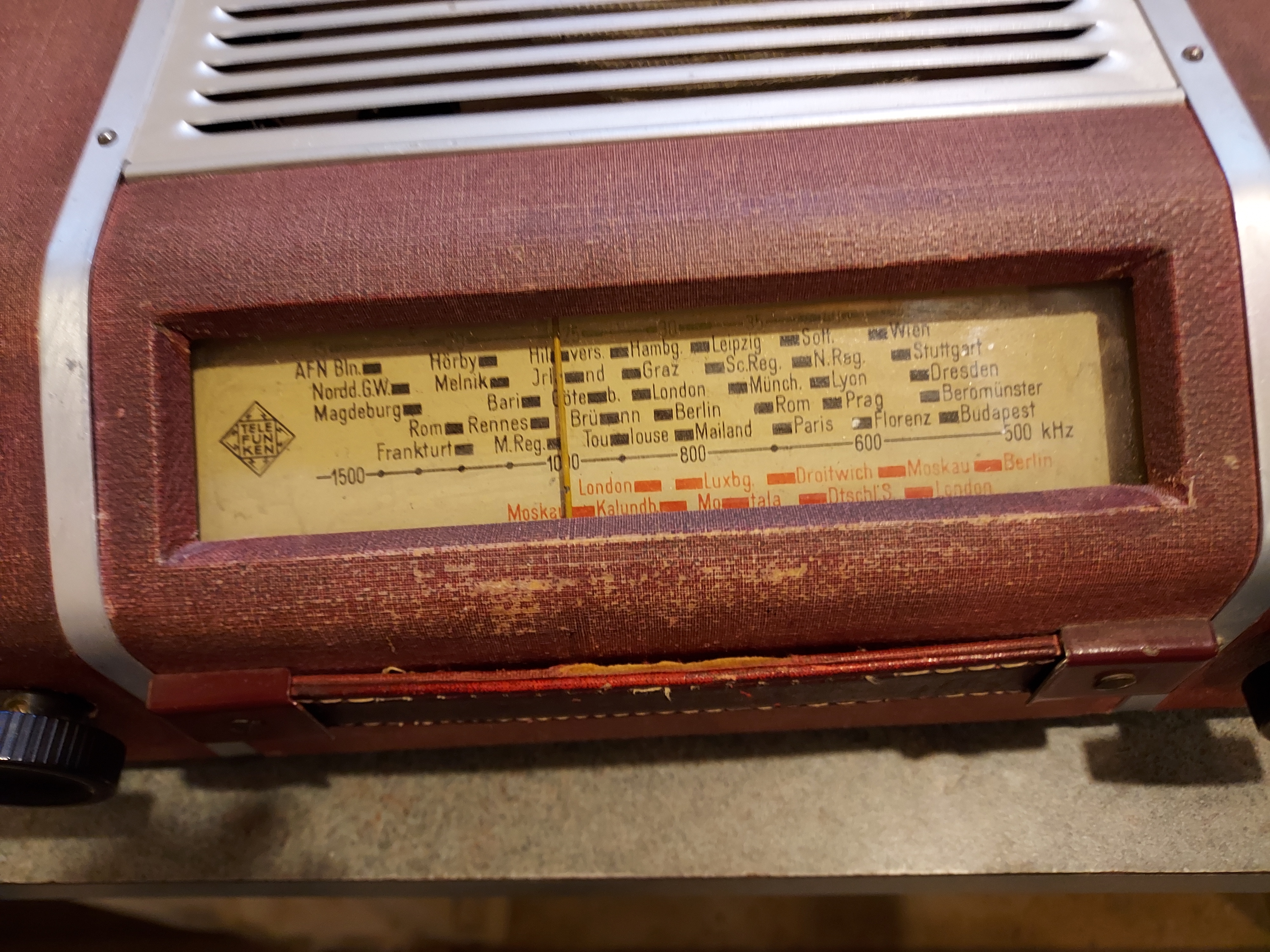
One tube (not sure what they call this type; steel case, and the pins have retaining locks on them) was out of socket but the speaker's magnet pulled it and so it did not bounce around, and one speaker retaining tab separated from the case; it will be a simple case of wood glue application.
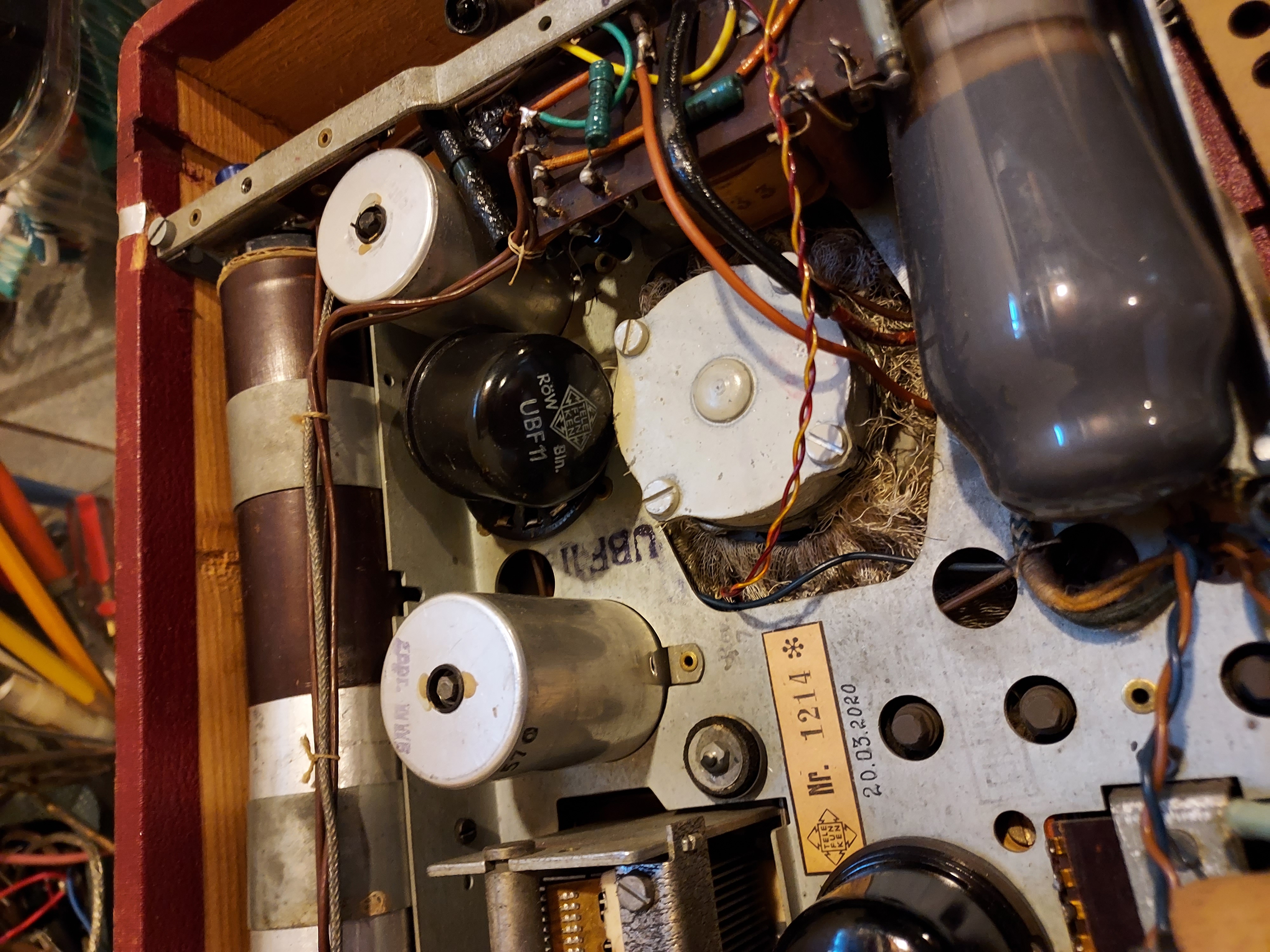
This is what the chassis look like
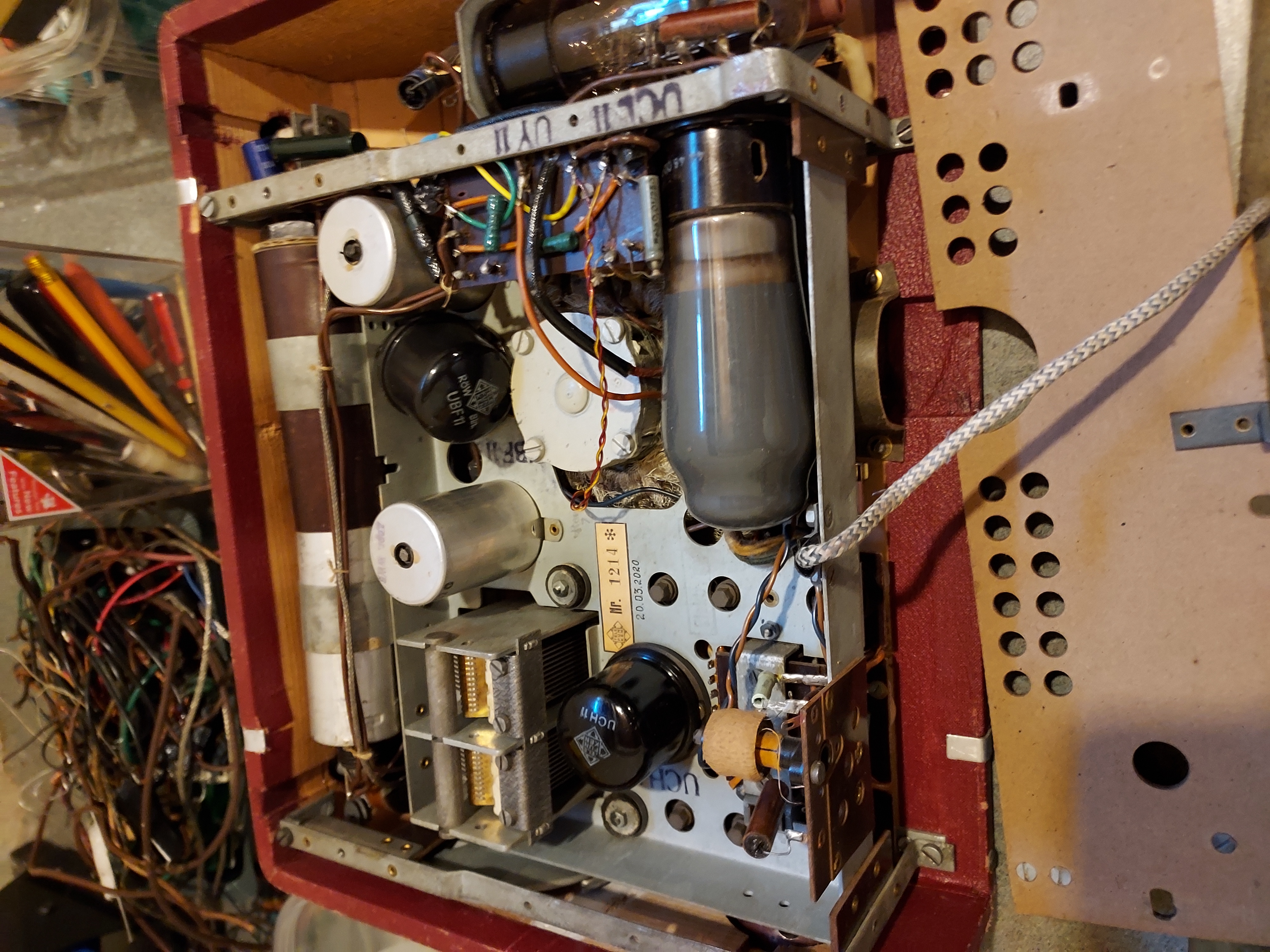
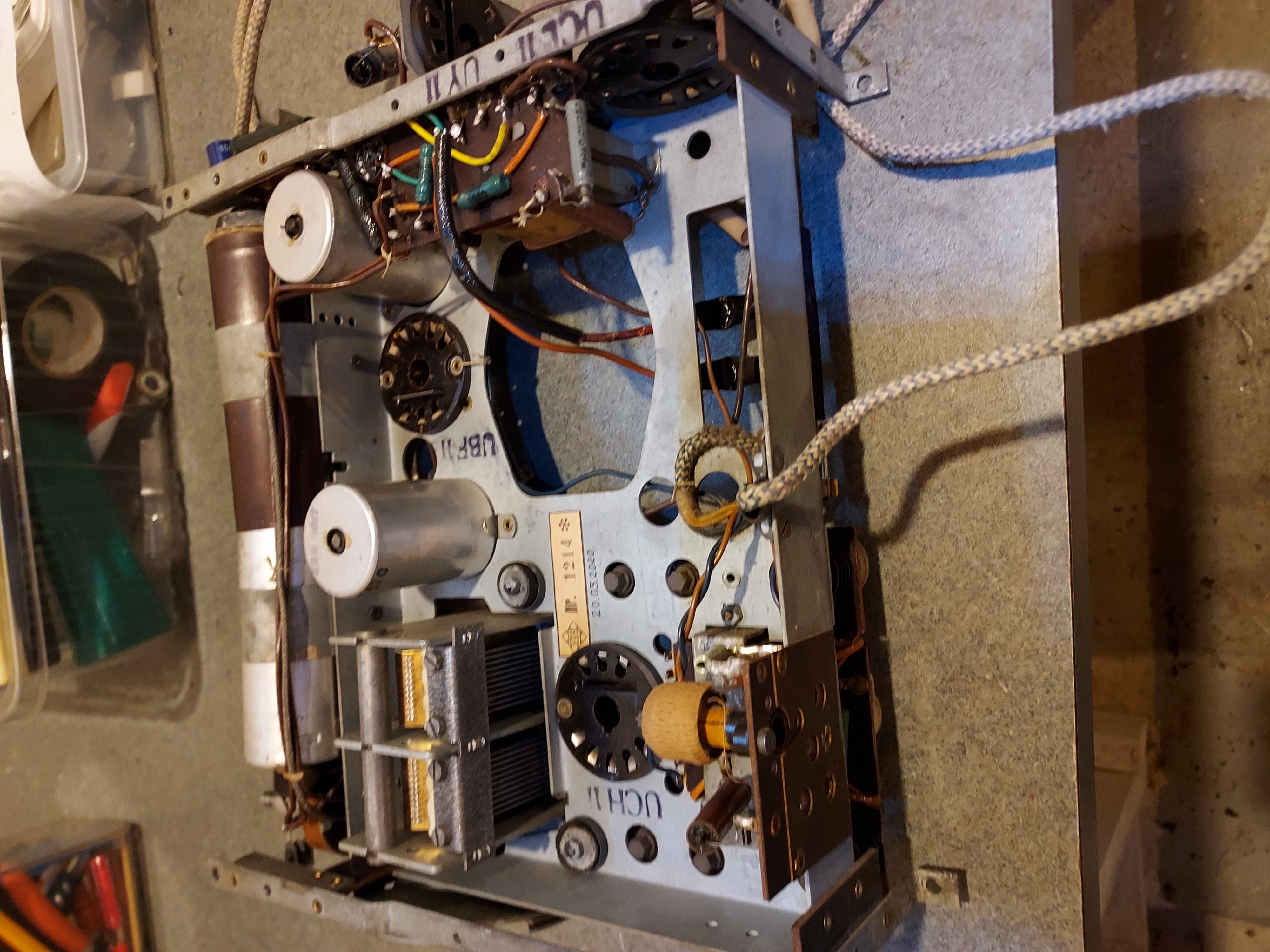
The set was touched up. So far there was no hacking, it was a pretty neat and discrete touch up.
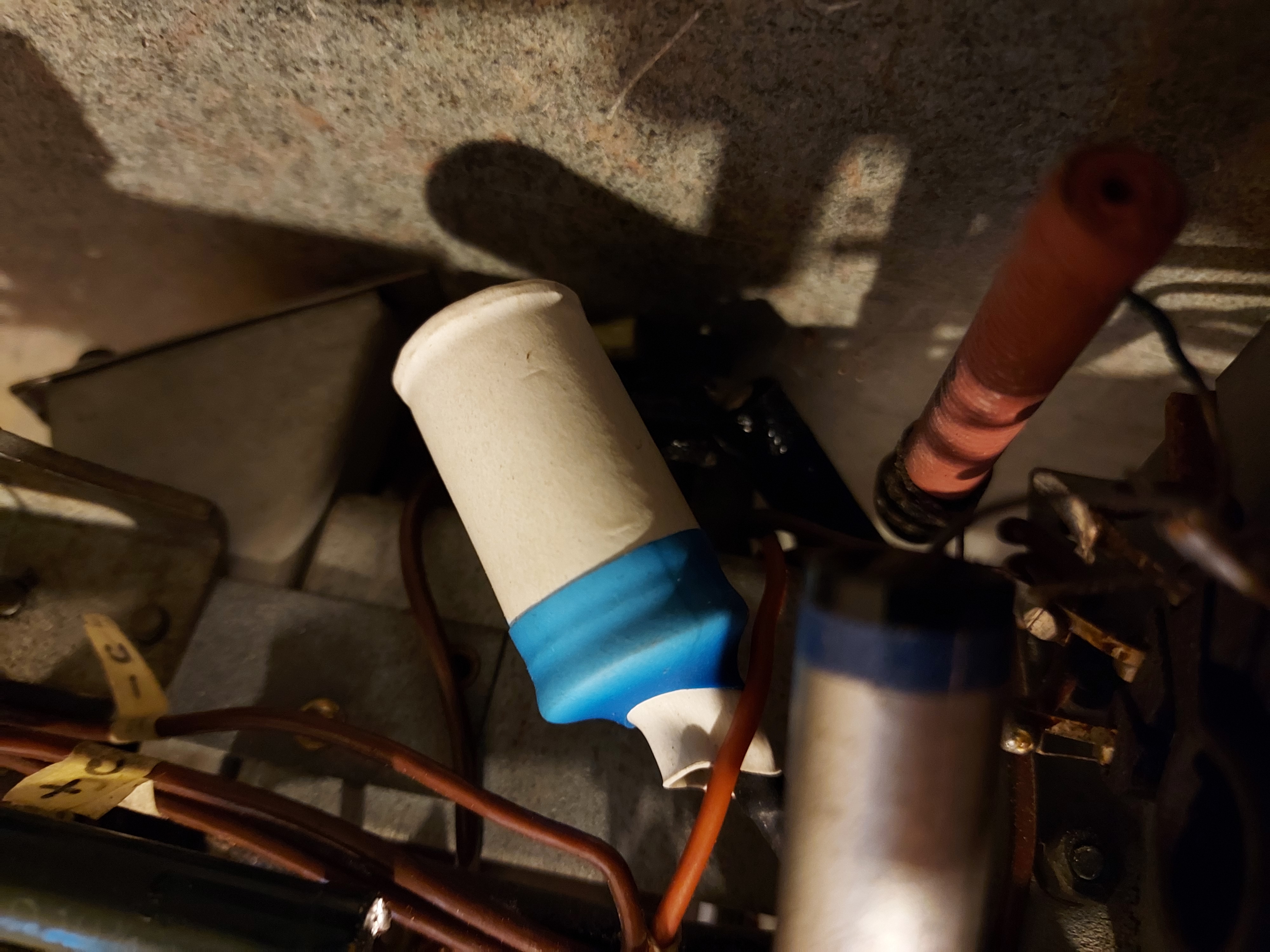
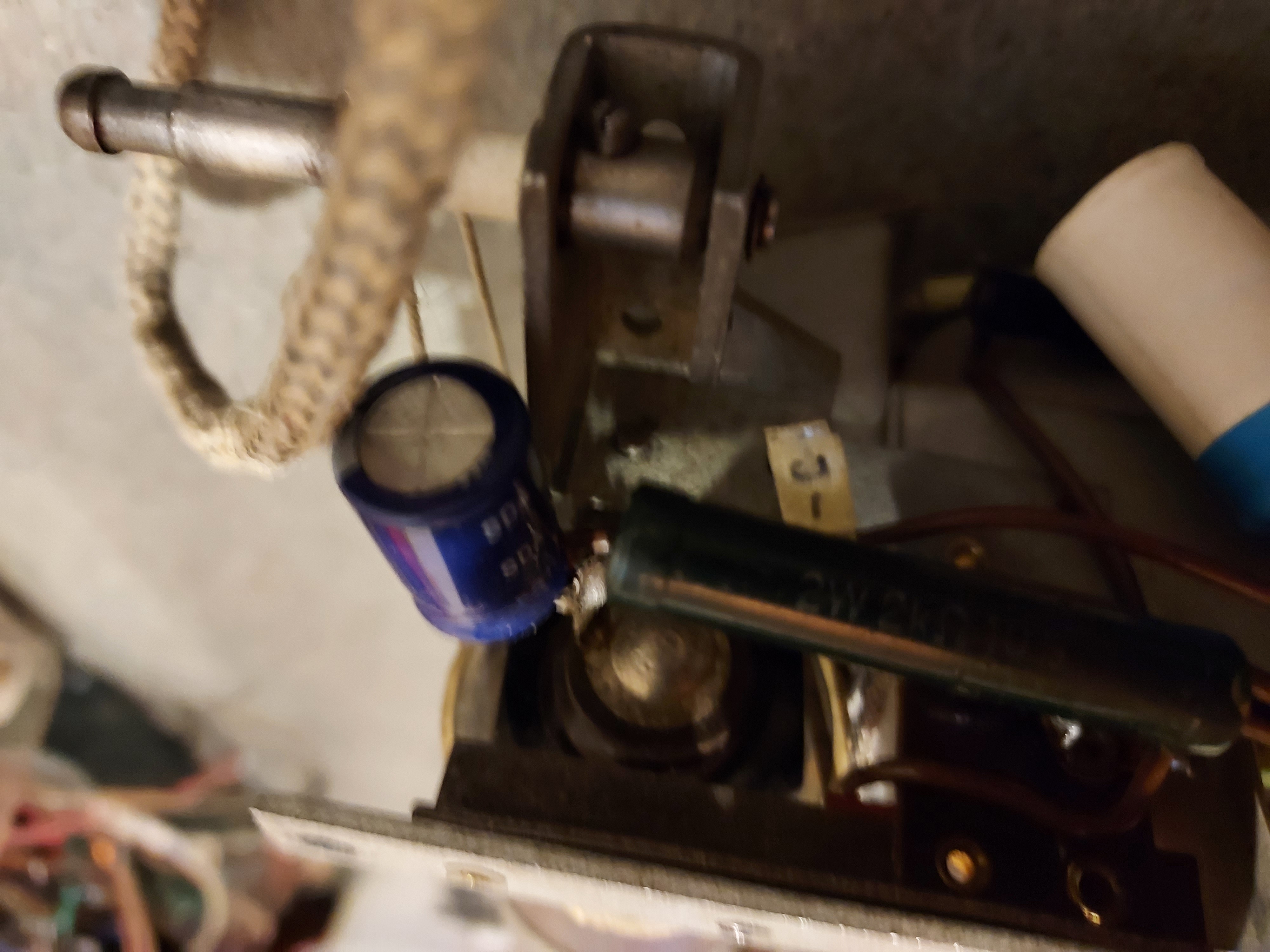
Not sure this resistor is original.
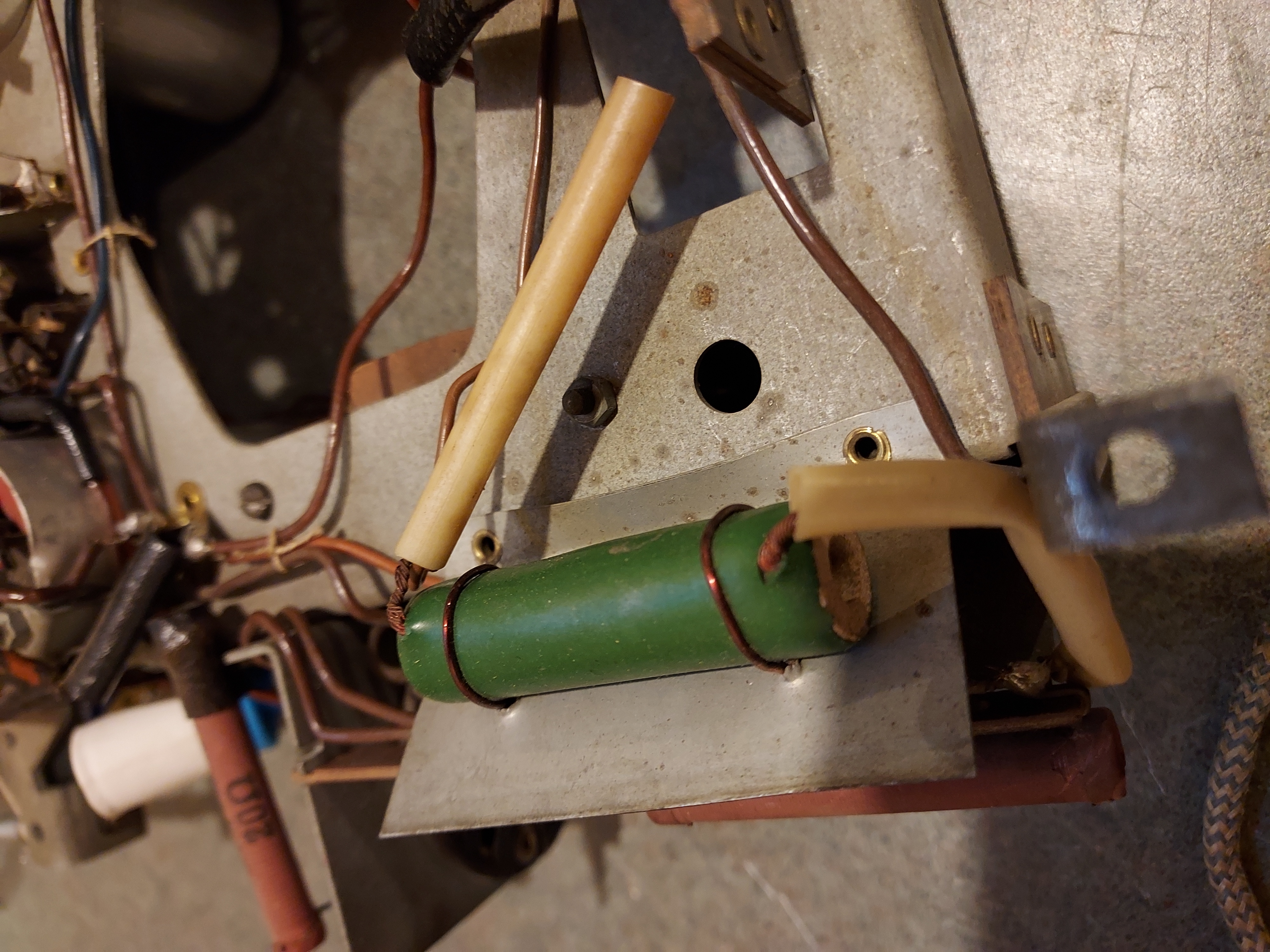
As usual, the recap is the first order of business. I will go though the tubular caps first. They are out of tolerance pretty badly even if not as bad as the ERO caps were in my Grundig. About double to triple. Then I will deal with the electrolytics.
Here I am measuring the antenna cap (the schematic and the written on the cap values are 500pF).
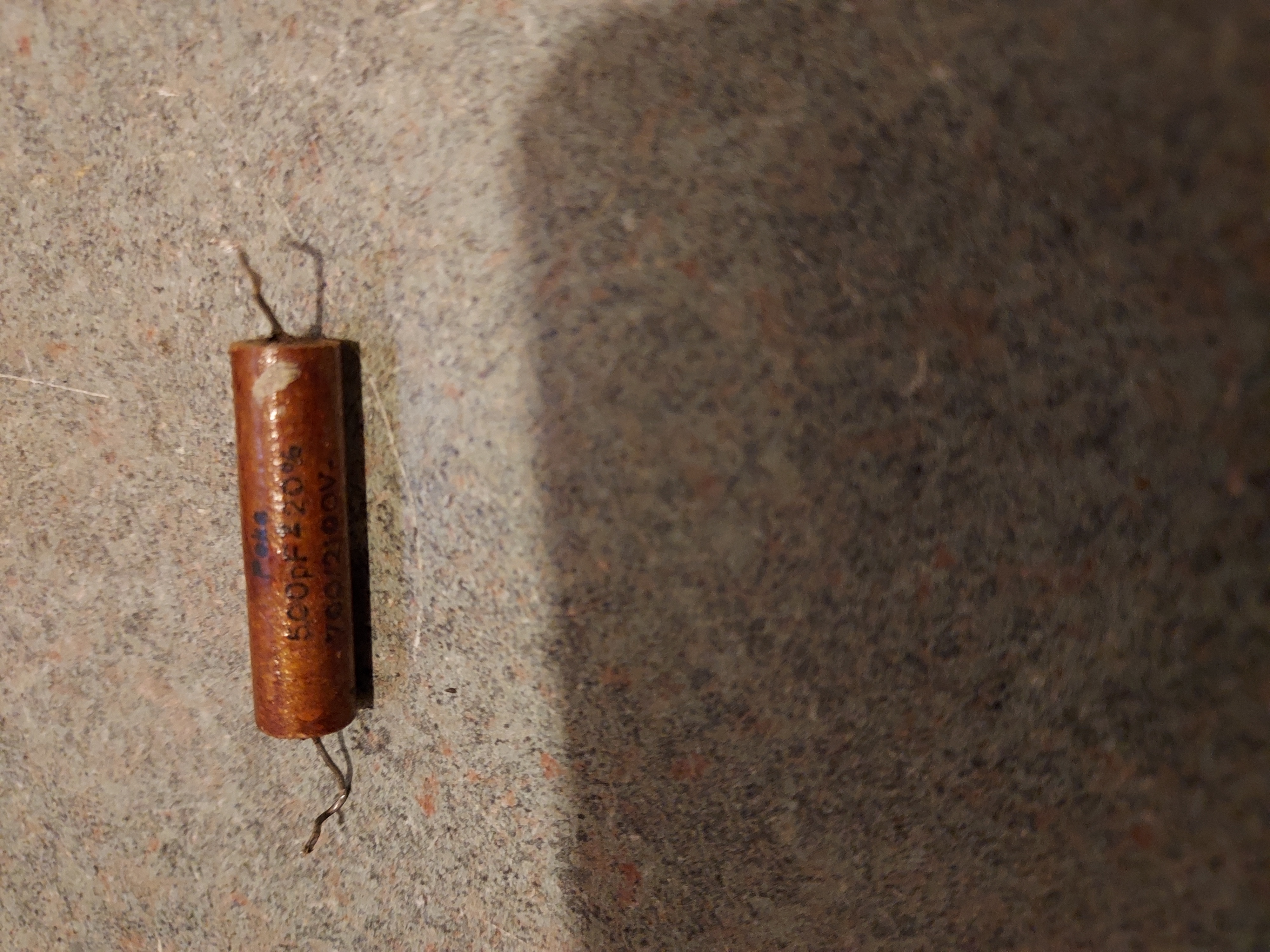

After the restuffing:
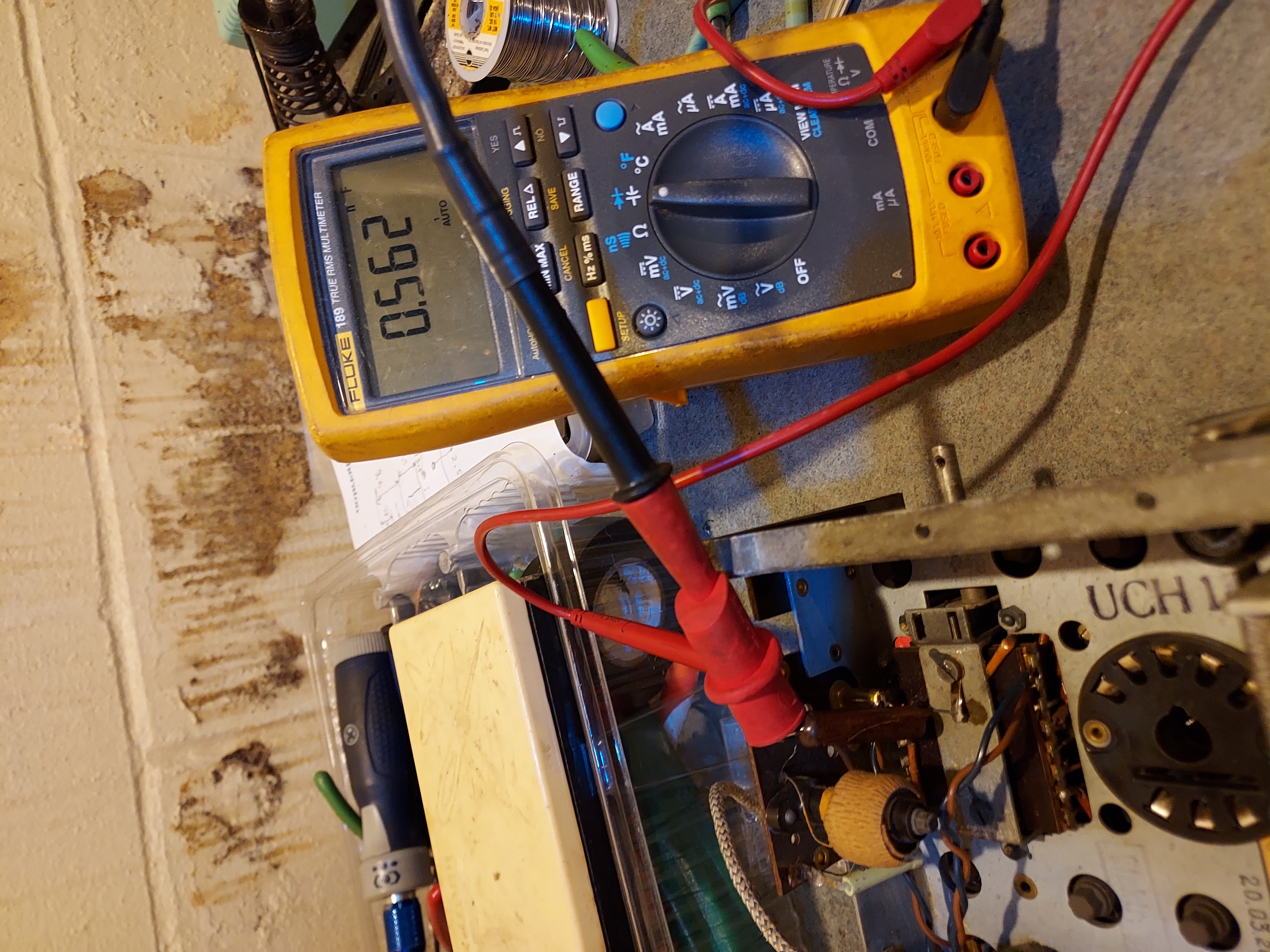
Same about the 20nF cap across the rectifier:
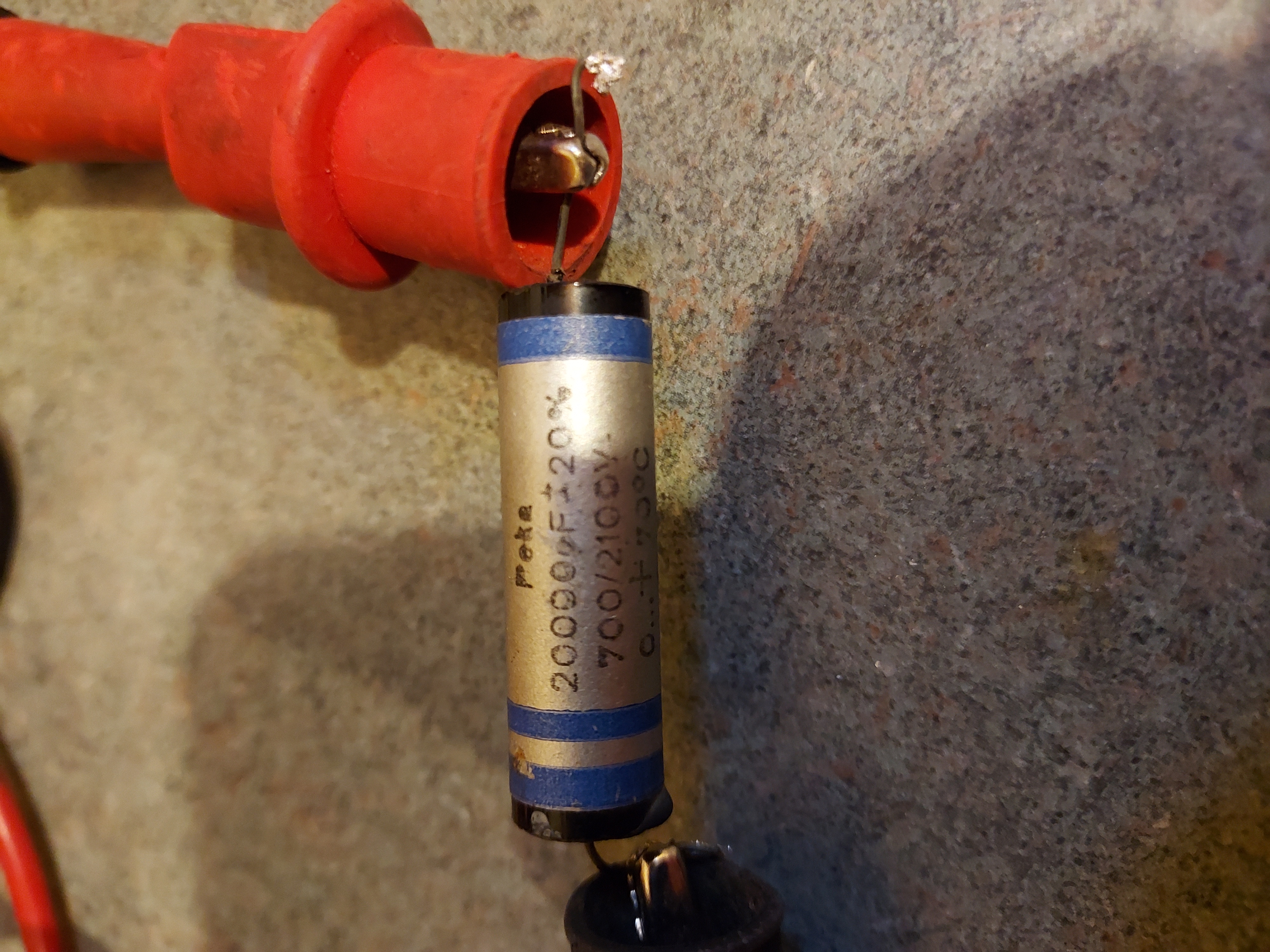
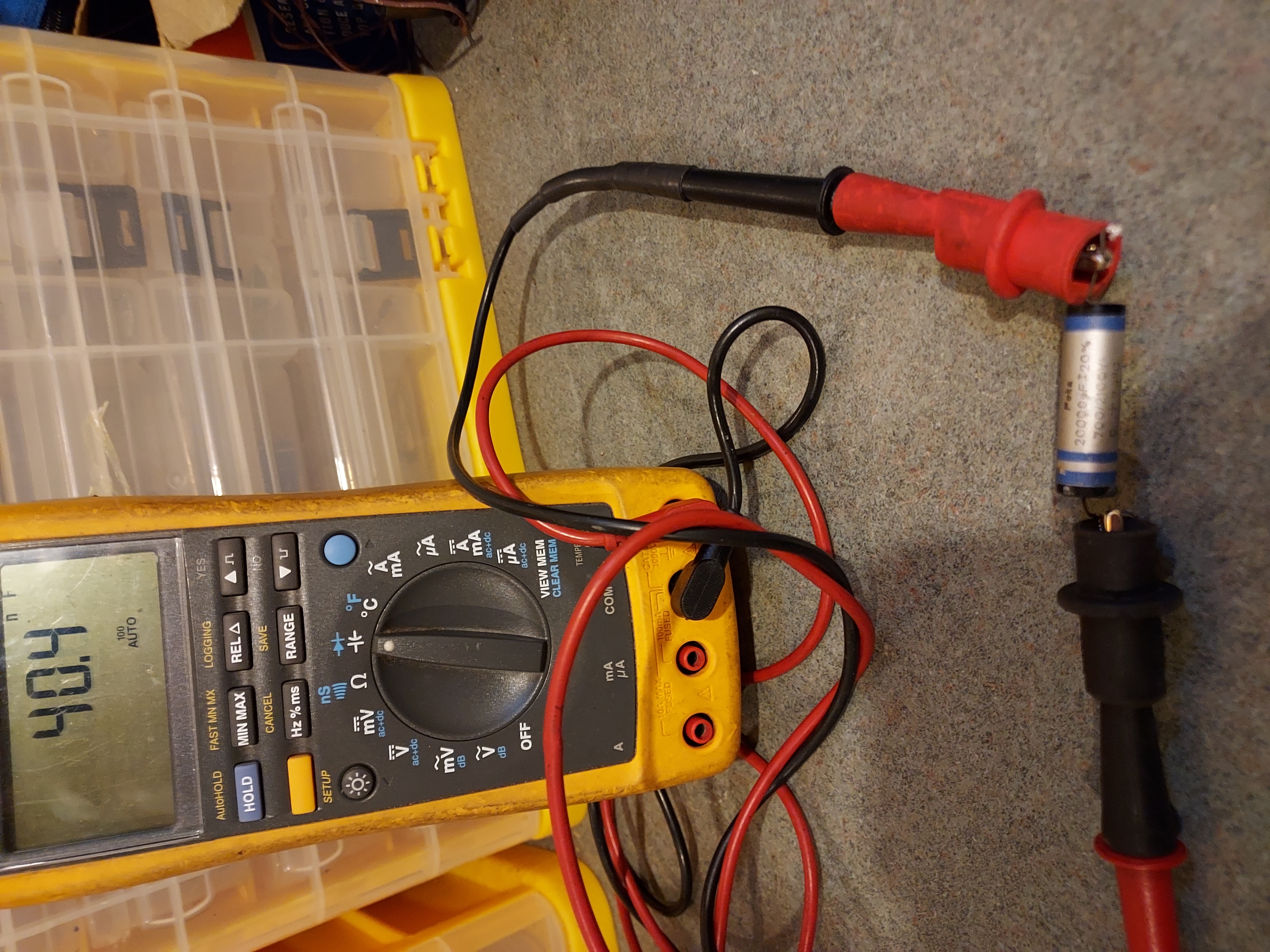
And after restuffing:
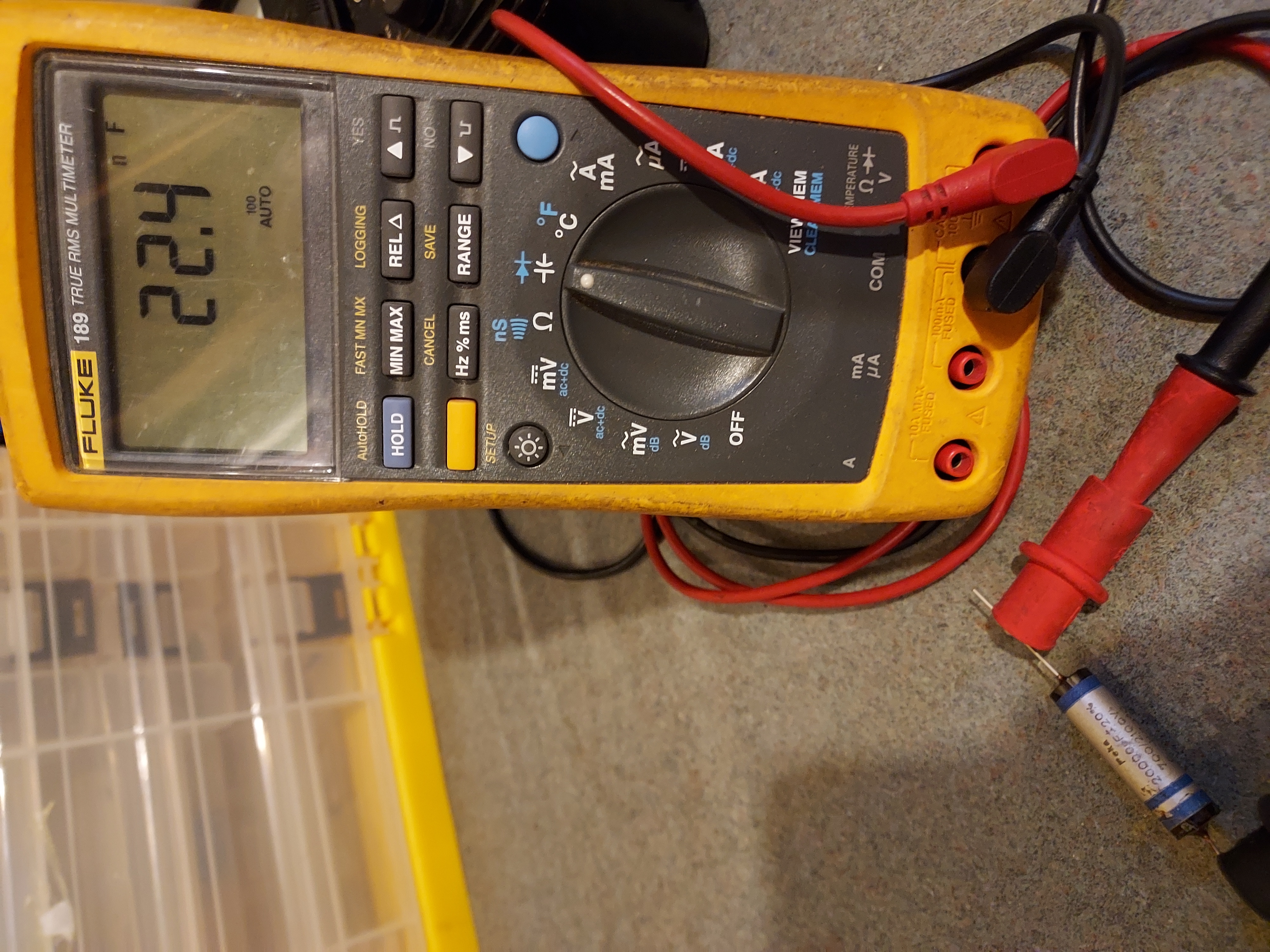
From the sch I see they seem to use the switch for the AC voltages. However I only see the wires soldered to the terminal lugs on the what appears to be an autotransformer that is used to bring the AC up to 220VAC from whatever Mains there is.
I will have to figure it out and probbaly resolder the contacts as I do not see any sort of switch there. Which might be a rightr thing to do, short of introducing interlocks to protect the sch from overvoltage.
So, enough for today.
He told me about it, and then mom also remembered the same, and then I decided to find out about it, and some folks on the Russian-Ukrainian forum were helpful and told me what it was from my description, and then eventually about couple of months or so ago Peter found me one in Ukraine and shipped it to me. Surprisingly, he has a video of it working and pulling in stations.
When I showed it to mom over Skype video, she said "Oh....wait...is it a Telefunken?". She is 86. What a memory.
Anywho. I did not risk plugging it in, plus it was set to 220V anyway and will need to be set to 110-125VAC.
From the schematic of it, it seems to be an AC/DC set.
Today I eventually put it on the bench.
This is the schematic:
One tube (not sure what they call this type; steel case, and the pins have retaining locks on them) was out of socket but the speaker's magnet pulled it and so it did not bounce around, and one speaker retaining tab separated from the case; it will be a simple case of wood glue application.
This is what the chassis look like
The set was touched up. So far there was no hacking, it was a pretty neat and discrete touch up.
Not sure this resistor is original.
As usual, the recap is the first order of business. I will go though the tubular caps first. They are out of tolerance pretty badly even if not as bad as the ERO caps were in my Grundig. About double to triple. Then I will deal with the electrolytics.
Here I am measuring the antenna cap (the schematic and the written on the cap values are 500pF).
After the restuffing:
Same about the 20nF cap across the rectifier:
And after restuffing:
From the sch I see they seem to use the switch for the AC voltages. However I only see the wires soldered to the terminal lugs on the what appears to be an autotransformer that is used to bring the AC up to 220VAC from whatever Mains there is.
I will have to figure it out and probbaly resolder the contacts as I do not see any sort of switch there. Which might be a rightr thing to do, short of introducing interlocks to protect the sch from overvoltage.
So, enough for today.
People who do not drink, do not smoke, do not eat red meat will one day feel really stupid lying there and dying from nothing.




![[-] [-]](https://philcoradio.com/phorum/images/bootbb/collapse.png)


